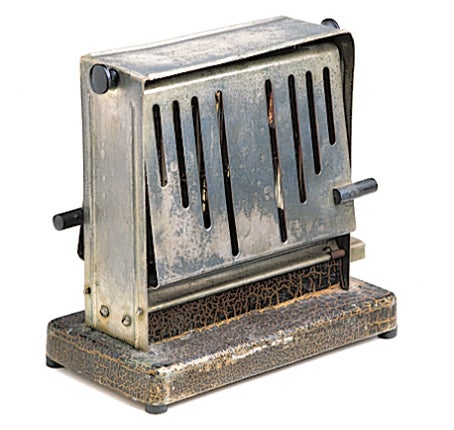The Secret History Of: The Dualit electric toaster

Toasting bread began back in Roman times mainly as a way of prolonging its life, but it was to be hundreds of years before anyone came up with a machine that could do the job efficiently.
The first electric toaster was invented in Great Britain in 1893, according to Mary Bellis, author of the About.com guide to inventors. "It only toasted one side of the bread at a time and required a person to stand by and turn it off manually when the toast was done," she says.
Thirty years later the pop-up version was invented and during the 1920s and 1930s inventors mainly tinkered around improving on this idea. It was around this time that Max Gort-Barton, an engineer, arrived in Britain from Germany. His grandson Alex, says: "After the war he bought a factory in the Camberwell Road and started making things. His first product was an electric fire that was also a light – hence the name Dual-light, which became Dualit. My grandmother used to buy the elements for it in Woolworths."
His first toaster was made in 1946 (above) but instead of popping the toast up, Gort-Barton invented a flipping mechanism so that when one side was done it would flip on to the other. Shortly afterwards a crucial decision was made that would shape the company's direction for ever more. A contemporary of Gort-Barton was also making kitchenware at this time. His name was Ken Wood and he had decided to go for the domestic market. So Gort-Barton took the commercial route. In 1952, his six slot toaster was created – the outward appearance of which is still the same today.
Alex says: "They were for busy cafés so you could put your bread in and go off and serve coffee while the toast was cooking, but crucially it wouldn't pop up and get cold. The aluminium and stainless steel casing meant that it kept the toast fresh and hot, not cold and soggy.
"Then people started seeing them in cafés and asking where they could buy them so we put a few in John Lewis," says Alex. Then in the 1980s suddenly the Dualit took off. "I think it was a happy accident. It was good design and it was shiny and polished and expensive and it fitted in with the 1980s zeitgeist that just said 'loadsa money'. Things went mad. We were turning down orders. We were grabbing them off production lines and sticking them in taxis to be delivered. It was completely bonkers."
During the 1990s, the company expanded to make kettles, juicers and mixers and, a curve ball this – a stunning radio.
The newest invention is a four slice toaster which allows you to choose how many slices you are cooking - 1,2 3 or 4 to conserve energy and there is also a bagel setting which will toast one side and simply warm the other which is bagel perfection as any fool knows.
Join our commenting forum
Join thought-provoking conversations, follow other Independent readers and see their replies
Comments